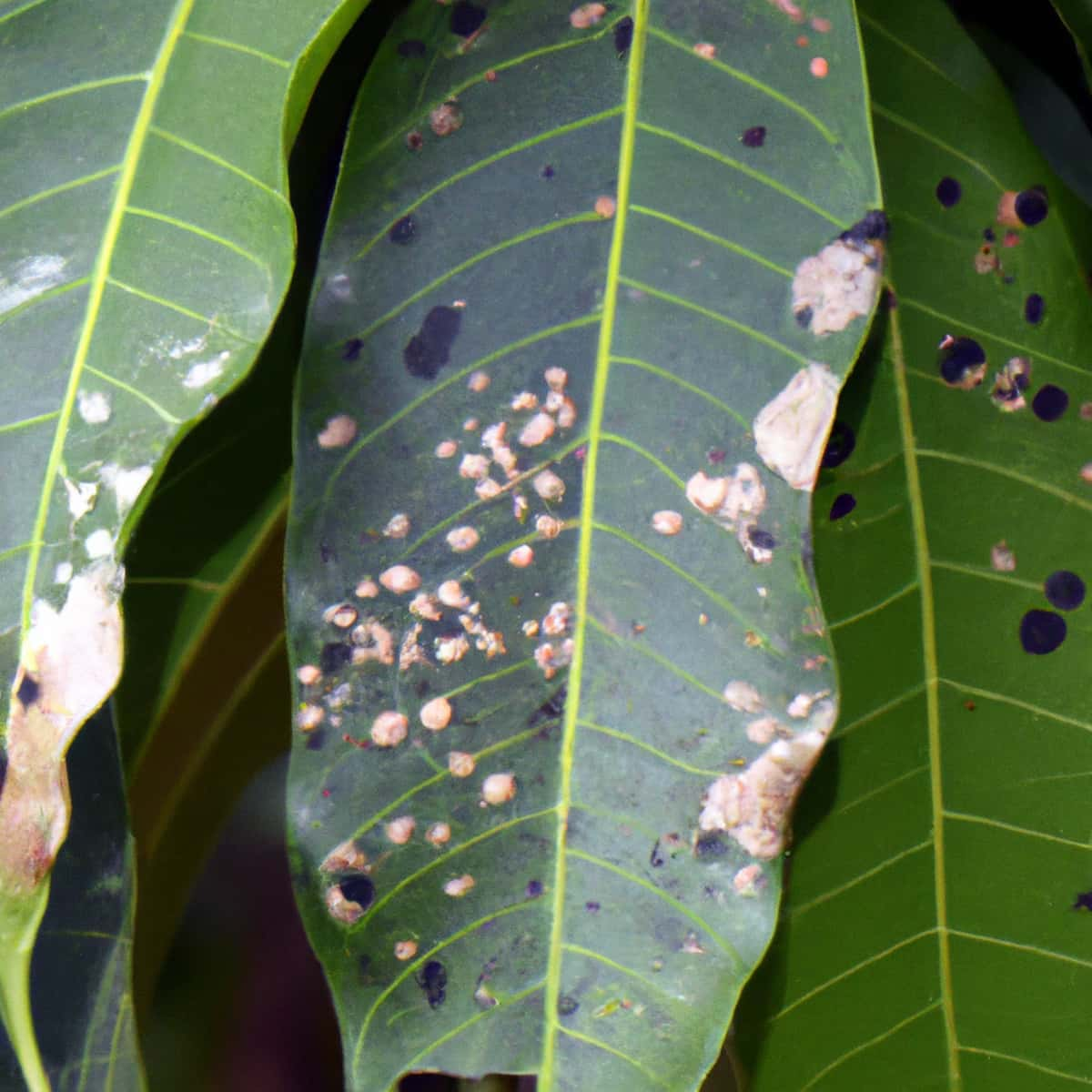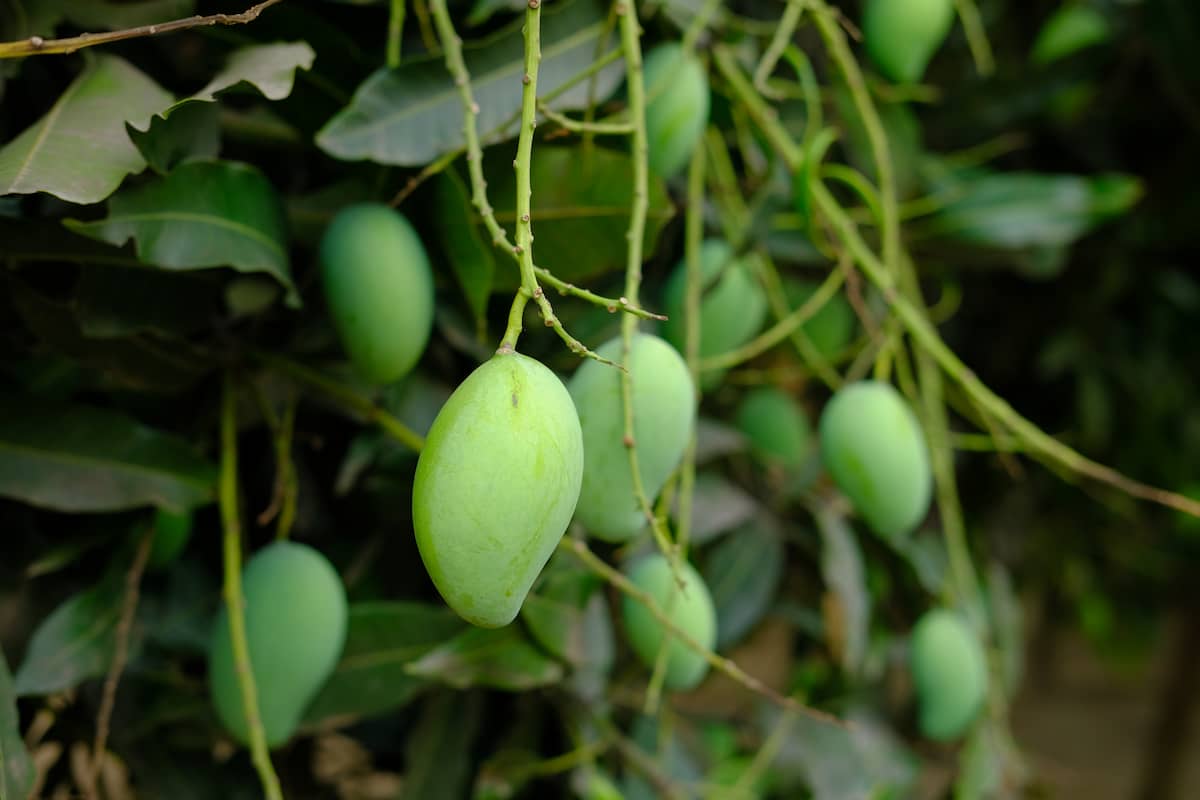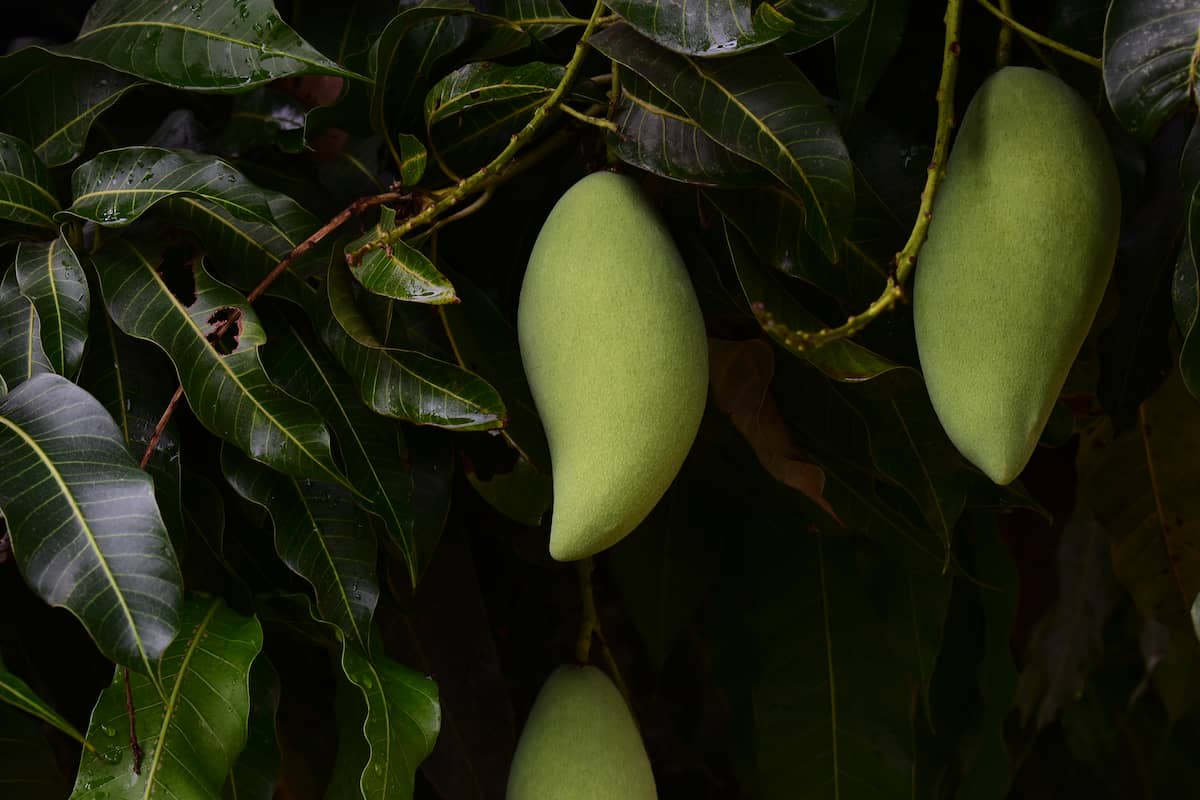The Mango Sooty Mould Disease is an important fungal disease caused by the fungus Capnodium mangiferae, which insects, birds, and other animals spread. It is also known as black or blotch mould. The fungus can cause significant damage to the crop, leading to a reduced yield, as the fungus can reduce photosynthesis and the fruiting process. The disease can also reduce the quality of the fruit and even make the fruit inedible. The disease can spread quickly and severely reduce yields if not managed properly.

Early detection and prevention are key to successfully managing this disease. The effective way to prevent the disease is to control the insect population that spreads the fungus and maintain good cultural practices such as pruning and irrigating. To effectively manage this disease, it is important to understand its disease cycle, the mode of disease spread, and the best methods for controlling it. This article will provide an overview and discussion of the Mango Sooty Mould Disease in Mango crops, including its symptoms, identification techniques, and control.
Mango Sooty Mould Disease Management
The Causal Organism of Mango Sooty Mould Disease
- Capnodium mangiferae is a facultative saprophytic fungus that belongs to the Family Capnodiaceae of Order Capnodiales of the Phylum Ascomycota.
- It produces a black, powdery mass of chain spores on the plant surface.
- The spores are unicellular, dark brown to black, and ellipsoidal or cylindrical.
- The pathogen is found in the soil, decaying plant material, and other crop debris and can overwinter in plant debris in the orchard.
The Disease Cycle of Mango Sooty Mould Disease
The disease cycle of the Mango Sooty Mould Disease, Capnodium mangiferae, in Mango Crops begins when the sooty moulds colonize the honeydew secretions secreted by the insects such as aphids, mealybugs, and scale insects on leaves and fruits while feeding on the sap of trees. These fungi do not directly infect plants but instead grow on the surface of the plant tissues, such as leaves, stems, and fruits.
Sooty moulds derive their nutrients from sugary secretions called honeydew, produced by insects such as aphids, mealybugs, and scale insects. These insects feed on the mango tree sap, excreting a sugary liquid called honeydew, a substrate for the fungus to grow. The fungus colonizes the honeydew, forming a dark, sooty layer over the mango tree’s leaves, stems, and fruit.
The honeydew provides an ideal nutrient source for the fungus, which grows rapidly and forms a black, powdery coating on the plant surface. The coating of sooty mould can become quite thick and may cause a reduction in the plant’s photosynthetic ability, leading to reduced growth and yield. Capnodium mangiferae pathogen is primarily spread by insect vectors, especially the mango hopper (Idioscopus clypealis). The sooty mould can also spread from infected plant material or pruning tools.
Occurrence of Mango Sooty Mould Disease in Mango Crop
- Location of Mango Sooty Mould disease: This disease occurs in mango crops in India, Africa, Bangladesh, Sri Lanka, Nepal, Thailand, the Philippines, the United States, Mexico, Brazil, and Australia.
- Host range: The most common crops affected by Capnodium mangiferae are mango, avocado, citrus, guava, papaya, passion fruit, and coffee.
Favorable Conditions for Mango Sooty Mould Disease Spread in the Field
- The fungus is most prevalent during periods of high humidity, rainfall, and warm temperatures of 20-35°C, as these conditions provide a favorable environment for the growth and spread of the fungus.
- Mango trees under stresses, such as water stress, nutrient deficiencies, or pest infestations, are more susceptible to the disease. The stresses weaken the plant’s defenses, making it easier for the fungus to infect the tree.
- Capnodium mangiferae feeds on the honeydew produced by sucking insects such as aphids, jassids, scale insects, and mealybugs. Trees that are infested with these insects are more likely to develop the disease.
- Poor sanitation practices, such as leaving dead plant material on the ground or not removing fallen fruit, can create a favorable environment for the development and spread of the disease.
In case you missed it: Mango Grey Blight Disease Management: Symptoms, Treatment, Chemical, Biological, and Organic Control

Damage Symptoms of Mango Sooty Mould Disease
- The disease is characterized by its black, powdery appearance.
- The fungus produces black, soot-like encrustations on the surface of the fruit and leaves, causing the surfaces to become dark, sticky, and unattractive.
- The black, sooty layer on the mango tree’s leaves, stems, and fruit can cause reduced photosynthesis and poor fruit quality.
- In severe cases, the disease can cause premature fruit drop, premature defoliation, stunted growth, yield loss, and may even kill the plant.
Percentage of Yield Loss Due to Mango Sooty Mould Disease in Mango Crop
- The disease can cause 10% yield losses in the United States. In Mexico, yield losses are 10-50%. In India, the yield losses range between 20-50%. In Bangladesh, the losses are 20-50%. In China, a 10-50% yield loss is seen. In Thailand, it is up to 50%.
- In Africa, yield losses are between 10-50%. In the Philippines, it is 20%. In Brazil, it is up to 60%. In Australia, the losses are 50%. The Economic Threshold Level is determined at around 5-10% of affected leaves.
Cultural Control Measures of Mango Sooty Mould Disease
- Prune the trees regularly to improve air circulation and light penetration within the canopy, reduce humidity levels, remove infected branches, and keep the tree free of infected leaves that can harbor the disease.
- Over-fertilization can make lush, tender foliage susceptible to Mango Sooty Mould Disease.
- Planting the trees in a well-drained area and proper irrigation practices such as drip irrigation and avoiding overhead irrigation can help to reduce the humidity levels, which prevents the disease from spreading.
- Proper sanitation practices should be followed, the fallen leaves, debris, and infected plant parts should be removed, and pruning tools should be disinfected.
- Rogue out and destroy the diseased plants in the orchards to reduce the disease spread.
Biological Control Measures of Mango Sooty Mould Disease
- Predatory insects such as ladybugs, lacewings, and hoverflies feed on the fungus and can help reduce Capnodium mangiferae.
- The fungi such as Trichoderma and Beauveria effectively reduce the population of Capnodium mangiferae and can be applied as a soil amendment or foliar spray.
- Parasitoids such as Encarsia and Aphelinus can attack the eggs and larvae of the scale insects that produce honeydew, which serves as a food source for Capnodium mangiferae.
- Bacillus thuringiensis bacterium produces a toxin that is toxic to scale insect pests.
Chemical Control Measures of Mango Sooty Mould Disease
- Spray Monocrotophos, Methyl Demeton, Propiconazole, Tebuconazole, or Azoxystrobin to control the fungus spread.
- Spray Imidacloprid or Thiamethoxam insecticides to control the insect populations.
Organic Control Measures of Mango Sooty Mould Disease
- Organic fungicides like Neem Oil, Garlic Extract, Copper Oxychloride, or Copper Hydroxide obtained from natural sources such as plant extracts and essential oils can provide effective control.
- Essential oils such as tea tree oil, clove oil, and cinnamon oil are effective against the fungus.
- Spray the starch solution to dry the leaves forming flake-like structures on the surface to remove the fungus.
- Collect the diseased leaves from the orchard and burn them far away from the field to control the disease spread.
Preventive Measures for Control of Mango Sooty Mould Disease
- Practice crop rotation with non-host crops such as legumes or grasses for at least two years between mango crop cycles.
- Regularly monitoring the crops for signs of disease will help to find and manage the disease early before it spreads.
- Planting mango varieties that are resistant to the fungus can reduce the spread and severity of the disease.
- Avoid overhead irrigation, as this can cause the disease to spread.
- Practice low-density planting of crops in the orchards and avoid contact between infected and healthy plants.
In case you missed it: Bark Borer Pest Management in Mango: Symptoms, Treatment, Chemical, Biological, Natural, and Organic Control

Conclusion
The Mango Sooty Mould Disease caused by Capnodium mangiferae is a significant disease that affects mango crops worldwide, causing considerable economic losses. Adopting an integrated disease management approach that combines these control methods is important. Moreover, regular monitoring and early detection can help reduce the disease’s incidence and severity. By taking appropriate measures, farmers can reduce the impact of the disease on their crops and improve their yield and profitability.
- Beneficial Insects in Pest Management
- Natural Solutions for Pest Control in Flower Gardens
- Types of Fungicides Used in Agriculture
- Common Issues in the Fruit Development Stage of Pomegranate Farming
- Fruit Development Issues in Papaya: Easy Solutions and Treatment
- Soil-Borne Diseases and How to Protect Your Plants
- Practices to Prevent Disease Spread in the Garden
- From Wilted to Thriving: How to Treat Root Rot Naturally in Houseplants
- Natural Remedies to Cure Brown Spots on Fig Tree Leaves